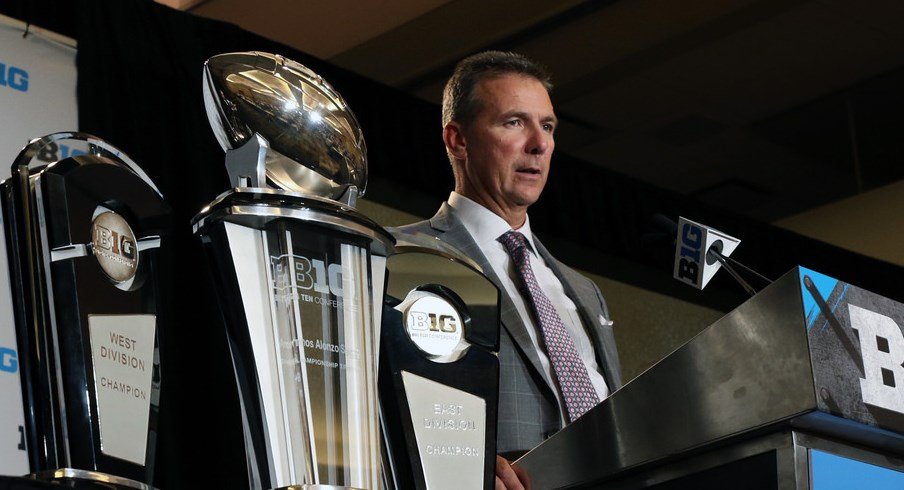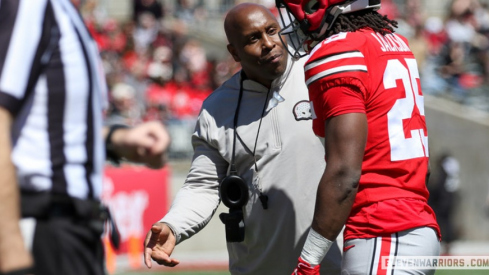The Great Man theory of history is something that historians in general have been trying to move away from for a long time: once a school of thought that said that so-called "Great Men" are responsible for moving history forward, and therefore we should study their choices, thoughts, actions, and so on. Essentially, if you wanted to understand why things were the way they were, you should spend approximately 389293298 hours studying the life stories of Napoleon, Caesar, Genghis Khan... pretty much any general-type that got a lot of people killed.
As it turns out, the Great Man school of historical thought was pretty much immediately discredited. Even people in the 19th century recognized that pinning the tides of human experience entirely on the whims of a lot of power-hungry dudes who often knew a lot about conquering and little else was kind of stupid. Historical events, as it turns out, are much more governed by larger societal forces than some random dude in a fancy hat telling people how to live their lives.
All of this is a roundabout way of saying that I was extremely skeptical of Urban Meyer's ability to make the Ohio State football team any good (relatively speaking) this season.
Point being, no one person should be able to create such insane progress with so little proven talent or even the slightest precedent for creating that kind of talent on the fly. Ohio State, in the last 10 seasons, has averaged nearly 14 returning starters per year. 2012 is sometimes talked about as a particular triumph for Meyer because of how bad the team was the previous season, but he was no doubt aided by a ridiculous 19 returning starters from 2011.
Urban himself never had fewer than eight returning starters at any of his previous coaching gigs, and now he was faced with reshaping a team with just six returning starters that had lost its most potent offensive weapons and had to play a tough schedule against a resurgent Big Ten and a road game against a perennial powerhouse.
The Big Ten games are still yet to be decided, but it's starting to become clear that there will be little to no dropoff in talent or the level of play that we see on the field. Which in general makes no damn sense, but it does leave the outside possibility that Urban Meyer is either a witch or one of these Great Men I keep hearing about. Still, to try and contextualize what Meyer has been able to accomplish with the 2016 Ohio State football team so far, I thought it might be instructive to check out some other, somewhat lesser, construction projects in human history to see if there are any themes that pop up.
THE GREAT PYRAMID OF GIZA
The Great Pyramid of Giza was the world's tallest man-made structure for nearly four thousand years, standing next to two sister pyramids created at around the same time – over the course of a few decades during the mid 2500s BC. Likely built for a line of ancient Egyptian god-kings starting with Pharaoh Khufu, there is still a lot of speculation around who it was that actually labored to create them. The Greeks claimed it was over 100,000 slaves, but more recent, non-garbage hearsay reliant historians (sorry Herodotus) suggest that it was more likely groups of skilled laborers that knew what they were doing and seemed to enjoy their work.
RELEVANT FUTURE 2016 MYTH
Urban hewed this team from a grove of Buckeye trees that emerged, Lady-of-the-Lake style, from the depths of Mirror Lake.
MORE LIKELY REALITY
That while the 2016 Ohio State football team is superficially very inexperienced, it also has a number of players at key positions with extensive playing time, and has leaned on these players heavily (particularly on offense).
THE TAJ MAHAL
Most people know that the Taj Mahal – finished in the mid-17th century – was the work of an Indian Emperor to honor and bury his dead wife. Which is pretty much exactly correct; Mughal emperor Shah Jahan commissioned the Taj Mahal to house his beloved wife Mumtaz Mahal, who he laid to rest after nearly 20 years of marriage. The Taj Mahal is generally thought of as a singular work by an incredibly determined man, but in fact was a massive project with many, many architectural influences and designers.
RELEVANT FUTURE 2016 MYTH
After a disappointing 2015 season, a grief-stricken Urban Meyer became the chief playcaller for both offense and defense and used advanced hand signals to maneuver every player around the field X-Box Kinect-style.
MORE LIKELY REALITY
Urban's exceptional hires, both old and new, gelled much more quickly in 2016 and allowed for better development of players. New additions like Schiano brought schemes that were immediately picked up on by both players and coaches like Luke Fickell and Larry Johnson.

THE EIFFEL TOWER
The Eiffel Tower stands at over 1,000 feet tall and is easily the most recognizable French symbol worldwide. It took only a few years to build in the late 1880s, and is one of the most visited tourist attractions in the world, with almost seven million people heading for the top in 2015. The Eiffel Tower is also made from wrought iron, which was actually produced in Romania at the Reșița iron works before being shipped to France.
RELEVANT FUTURE 2016 MYTH
Urban Meyer, pride of Ashtabula, imbued his 2016 team with good ol' fashioned Buckeye Pride, which carried them to victory.
MORE LIKELY REALITY
The starting quarterback is a Texan, the defensive line coach is a Nittany Lion from North Carolina, the associate head coach is from Jersey, one of the most explosive playmakers is from Brooklyn, and the rising star on defense is from Pennsylvania. This is maybe the most cosmopolitan Ohio State football team ever.
The Great Man theory is dead for a reason; no one person, no matter how incredibly influential they might be, are immune to the forces of society. So while Urban Meyer absolutely deserves an enormous amount of credit for how he's been able to shape his team into a potential Playoff contender out of what appeared to be bits of string and rubber bands, he doesn't get to be the architect, builders, and the materials.
Whatever success the 2016 Ohio State football team has will come from the players, assistant coaches, and the litany of support staff that has allowed for a sustained level of success unheard of in modern college football.
A Great Coach can put those conditions in place, but it takes a Great Culture to keep it going, and the Buckeyes are lucky enough to have that with the kind of leadership we've seen from the players and assistant coaches in recent years.


